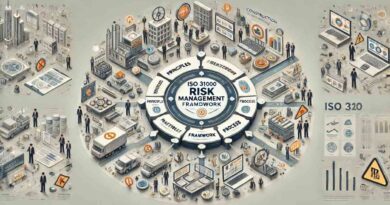Financial Risk Management: Key Concepts and Strategies – A Strategic Toolkit for Modern Businesses
A Proactive Approach to Risk
Today’s businesses operate in a landscape filled with financial hazards—currency shifts, credit defaults, volatile markets. Financial risk management isn’t just about defense; it’s about making smarter, more strategic decisions with your money.
Understanding Core Risk Categories
- Market Risk: Prices and rates fluctuate unexpectedly.
- Credit Risk: A customer or partner doesn’t fulfill payment obligations.
- Liquidity Risk: Running out of accessible cash when it’s needed most.
- Operational Risk: Mistakes, tech failures, or fraud disrupt financial systems.
Key Concepts to Master
- Risk Identification: Map out internal and external financial exposures.
- Measurement: Use quantitative tools like VaR, exposure matrices, or regression analysis.
- Control Framework: Create internal policies for early warning systems.
- Capital Buffering: Hold reserves for unexpected losses.
- Compliance Alignment: Stay within local and international regulatory limits.
Modern Tools for Financial Risk Management
- AI & Machine Learning: Detect anomalies in transactions.
- ERP Integration: Real-time financial dashboards.
- Cloud Analytics: Remote, scalable stress testing and forecasting.
- Blockchain: Improves transparency and auditability in financial transactions.
Strategic Risk Management Models
ERM (Enterprise Risk Management)
A holistic, top-down approach integrating all types of risk across departments.
RCSA (Risk and Control Self-Assessment)
Engages teams directly in identifying and rating their financial risks.
Key Tactics for Risk Mitigation
- Use of Derivatives: Hedge against currency, interest rate, or commodity price changes.
- Regular Scenario Planning: Plan for economic shifts, policy changes, and black swan events.
- Supplier Credit Audits: Verify payment histories to avoid defaults.
- Cash Flow Forecasting: Spot liquidity gaps before they become issues.
The Human Factor
- Train finance and operations teams in fraud detection.
- Build a culture of ownership and transparency.
- Encourage cross-functional collaboration to spot hidden risks.
FAQs
1. How is ERM different from traditional risk management?
ERM is integrated, forward-looking, and company-wide. Traditional models are often siloed.
2. What is a financial stress test?
It simulates adverse scenarios to test your financial system’s resilience.
3. Do startups need formal risk management?
Yes—especially to attract investors and scale responsibly.
4. Can AI help in managing financial risk?
Yes, AI excels at fraud detection, forecasting, and anomaly alerts.
5. What’s the role of compliance in financial risk?
It ensures your strategies align with laws, audits, and ethical practices.
Conclusion
Mastering financial risk management is key to future-proofing your business. With the right mix of strategy, tools, and team mindset, you can transform risk into a growth opportunity.
🎓 Explore Best Online Courses to Learn Risk Management
If you’re new to risk management or looking to deepen your expertise, there’s no better time to start than now. Learning from industry experts can help you build a strong foundation and gain certifications that set you apart in the job market.
At www.smartonlinecourse.com, in collaboration with the Risk Management Association of India (www.rmaindia.org), you can explore a range of self-paced, affordable online courses designed for both beginners and professionals. These courses are tailored to real-world needs, taught by experts, and designed for flexible learning.
👉 Visit www.smartonlinecourse.com to explore more!
📧 Email: [email protected]
Or WhatsApp us at: 8232083010/9883398055




